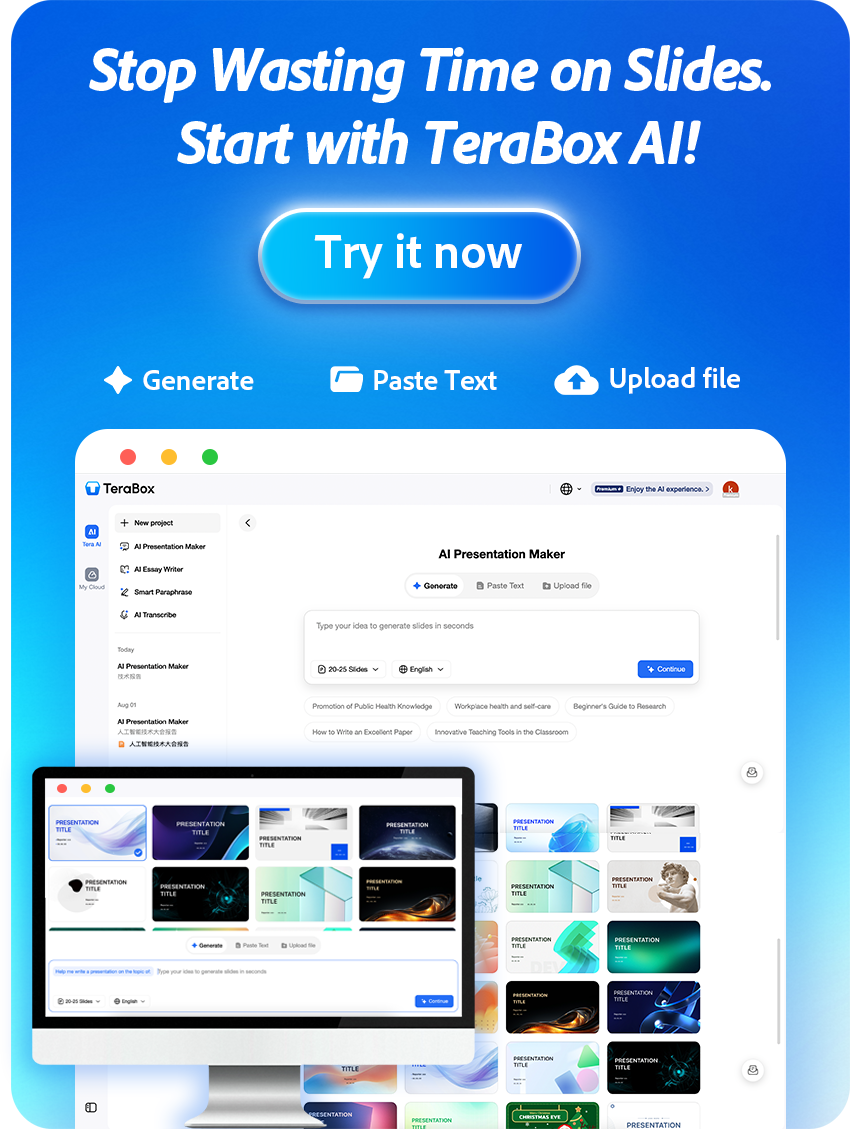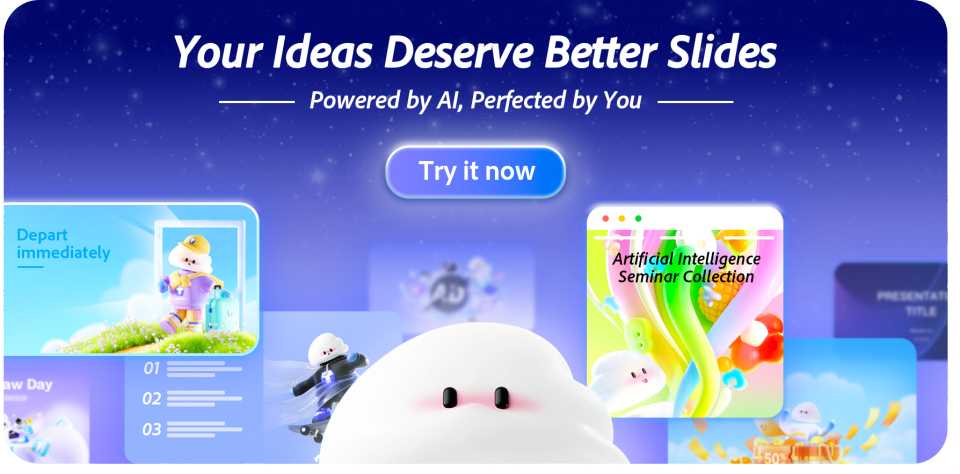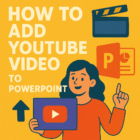Reading a paper or a series of slides to an audience is the key to an oral presentation. In order to properly communicate your message, your presenting style is just as crucial as your words. That is why it is important to learn how to create PowerPoint slides that complement and improve your presentation by following some rules.
Standing up and delivering information is only one aspect of a successful presentation. A presenter needs to think about how to convey the information to the audience in the most effective way. Make an engaging and educational presentation using multiple pointers.
Want to know more about it? Then keep scrolling!
What Is an Oral Presentation?

Effective verbal communication can be achieved through oral presentations, which can also include slide shows. It’s crucial that you avoid using your presentation to read your slides; while they might support your points, they shouldn’t take the place of spoken communication.
Presenters should avoid writing down their presentations on slides or listing every point they want to make because this takes away from the audience’s ability to interact with them. You won’t give a compelling presentation if you’re constantly staring at your laptop or your slides.
It is an official presentation of your work that is supported by research. A variety of locations host presentations.
For Example:
Your project team may communicate your progress on a certain project orally if you work for a company that divides employees into teams to work on projects.
You may give an individual oral presentation providing information about the organization’s operations, budget, and goals to funders and community members at an annual meeting held by the nonprofit you work for.
It is beneficial to learn how to create and give an oral presentation that works.
Purpose and Types of Oral Presentations

When it comes to oral presentation skills, versatility is key. Having a range of presentation styles at your disposal can help you keep your audience interested.
Here are eight key presentation types that every presenter should be familiar with:
1. Informative Presentation
Have you ever sat through a presentation that left you feeling enlightened? That’s the power of an informative presentation, which is all about sharing knowledge and shedding light on a particular topic, whether you’re going into the newest social media trends or exploring quantum physics.
Informative presentations are meant to increase the audience’s comprehension.
2. Persuasive Presentation
You have witnessed a persuasive presentation if you have ever been persuaded by an impassioned speaker who used strong arguments.
Similar to a verbal tug-of-war, the goal of this kind of presentation is to persuade the audience to adopt a particular viewpoint. Anticipate soundproof, rational arguments and a hint of sentimentality.
3. Presentation or Demonstration
In a demonstration or how-to presentation, the speaker walks the audience through a method, technique, or procedure step-by-step while giving them clear directions on how to do the same thing.
When teaching practical skills or providing a hands-on example of how something is done, a demonstrative presentation is especially helpful.
4. Motivational Presentation
Do you think you or your team might use a little boost? Motivational presentations are a perfect fit for the situation. These presentations, in my experience, are most effective when they are genuine, full of sincere moments, candid stories, and a little vulnerability.
Connection is the key. Sharing personal anecdotes that truly hold significance for you is something you should do.
5. Presentation for Sales
One of the many different kinds of business presentations is the sales presentation, which is the mainstay of companies trying to attract new consumers.
These presentations highlight goods, services, or concepts with a touch of charm and persuasion, all with the ultimate objective of closing the purchase.
How Long Should an Oral Presentation Be?

The ideal length of an oral presentation depends on the context and audience, but generally, it should range from 5 to 15 minutes for most professional or academic settings. Shorter presentations (5–7 minutes) are effective for pitching ideas or delivering quick updates, while longer ones (10–15 minutes) allow for deeper exploration of a topic.
It’s important to stay within the allotted time, keep your message clear, and leave room for questions if expected. Always tailor the duration to the setting, purpose, and attention span of your audience.
Apart from motivation, the link between you and your audience is also crucial. You should offer personal anecdotes that hold genuine significance for you. However, if you want your presentation to stay interesting for your audience till the very end, then keep it 20 to 25 minutes.
Key Elements and Tips for Effective Oral Presentations
1. Practice
Practice! Pay attention to the tempo, word choice, tone, volume, pauses, and transitions. Be mindful of timing constraints. Take your time and make any necessary revisions.
Ask for comments after practicing your presentation in front of a friend or relative.
Arrive at the room well in advance. If you find that listening to soothing music helps, do so. If you must utilize the technology, make sure it is operational.
2. Stay Calm
Chat with people in the audience before you present. This breaks the ice, creates connections, personalizes the encounter, and helps you feel more at ease.
Experts often suggest that you focus your presentation on a group of individuals instead of the entire audience. This makes it seem as if you are speaking to a smaller group.
3. Pace and Volume
Go slowly. Going too quickly is the single biggest error made by unskilled speakers. Keep in mind that your audience is unfamiliar with the subject matter and is hearing it for the first time.
Talk plainly and loudly. Learn how to pronounce challenging words beforehand.
4. Body Language and Eye Contact
Look your audience in the eye and keep it there. Always face your audience; attempt to look up from your notes frequently and refrain from reading from your slide show.
At the front of the room, take a tall stance. Avoid hiding behind a lectern, leaning on a desk, or sitting down. Avoid swaying back and forth.
5. Answering Questions
Make time to respond to inquiries, and be ready for any queries your audience might have. Before responding, you can take a moment to collect your thoughts. If something is outside of your comfort zone, you can boldly state, “That is outside the scope of this research.”
6. Share Your Personality
While keeping professional etiquette, try to have some fun and inject your individuality into the presentation. People will remember you and your message if you make the presentation distinctly yours.
How to Make a Good Oral Presentation?
Whether speaking in a classroom, conference, parliament, or a packed city plaza, the principles of public speaking are always the same. Effective public communicators convey complicated ideas in plain, uncomplicated terms.
When they talk, they pause, and they convey their point with assurance that comes from their preparation and expertise. A good presentation should be:
- An effective presentation
- Including clear and pertinent message
- Well-structured and backed up by data
- Showing comprehension and analysis of concepts
- Planning a presentation
- Incorporating focus and purpose
A dry list of unrelated information is not what a presentation is meant to be. It makes a point, much like essays or lab reports do. To begin, ask yourself, “So what?” Choose the most crucial argument you want to make and explain its significance.
➔ Audience
Make sure your presentation is appropriate for the audience. Think on their background knowledge and why they are attending your presentation.
Because they are well aware that they will eventually present to you, classmates are usually very receptive to your discussion and will probably have some background knowledge on the subject.
➔ Structure
In addition to preventing you from hopping from thought to idea, which can make it harder for your audience to follow your speech, a logical structure supports a clear and focused message.
➔ Overview
Introduce yourself to the audience, and then use important background information to support your main point.
- Explain the importance of your presentation
- Establish a connection with the audience so they can follow along
- Your presentation’s body should be the biggest portion of your presentation
- It provides particular examples to back up your primary point
- Visual tools help you make your points clearer and give your presentation more authority
- Sum up your major ideas in a compelling conclusion
- Repeat your argument in brief using the main points from your introduction
- Make a succinct but impactful comment to close up your presentation
However, what if I tell you that there is a presentation tool that can make creating presentations more fun and entertaining? Yes, you guessed it right; we are talking about TeraBox. An amazing AI tool that can turn your ideas.
Now, you can quickly prepare your presentation. It will generate the presentation from scratch if you give it a question, topic, concept or upload a file.
It eliminates the unnecessary work. There is no need to style bullets, collect photographs, type anything, or organize information on slides. It will save you a great deal of time and take care of everything.
Oral Presentation Skills for Different Users
1. Plan Your Presentation
The first and most important stage, which serves as the foundation for a good presentation, is comprehending the subject matter.
After deciding on a topic, thoroughly research the presentation’s subject. You will feel more comfortable responding to questions posed to you if you have thoroughly studied your subject.
2. Understand Your Audience
Just as important as the subject you will be presenting is understanding your audience. Recognize your target audience. Find out about their histories, passions, worries, etc. This will assist you in adjusting your material appropriately.
For instance, a senior management individual who needs to see the entire business may not understand technical jargon that you are familiar with if you work in data analytics.
This strategy could ultimately lead to misunderstandings and no inference. Simplify the facts so that someone from a different field can comprehend the data and conclusions drawn from the conversation.
3. Presentation Outline
A speech that is well-structured will captivate the audience and leave a lasting impression. This also holds true when giving a presentation. Thus, start by creating a presentation outline that is well-structured.
An engaging introduction, a solid body, and a useful conclusion are all essential components of every presentation. You will be guided by the 10-20-30 presentation rules regarding the size and duration of the presentation.
- The 10-20-30 presentation rule states that there should be no more than 10 slides.
- The presentation should be delivered in no more than 20 minutes.
- Make sure the font size is at least 30 points.
4. Keep It Simple
The secret to getting your audience to concentrate is simplicity. A single slide should not include too much information for your audience.
A slide should have no more than 6–8 succinct lines. Additionally, it will provide the impression that your presentation is neat and attractive.
5. Storytelling
Using stories increases the impact of your presentation. Your audience will remain interested and be able to remember the information you presented if you weave it into a story.
Introduce the problem statement, statistics, and your proposed solution rather than just presenting the data with an inference. At first, storytelling may appear a bit complicated. You may create engaging narratives with the aid of AI features.
6. Visual Aids
Using visual aids is crucial to making your presentation more appealing. Make sure the images you use are not only pertinent but also function as cues for the information you plan to cover on particular slides.
If you use cue cards excessively, you risk alienating your audience. These components are becoming more and more well-liked because of their capacity to grab attention and provide concise explanations of difficult ideas.
7. Using Multimedia
Including high-quality icons and graphics is essential. Additionally, incorporating contemporary multimedia trends into presentations—like animated elements, brief video clips, or interactive infographics—can greatly improve audience engagement and comprehension.
Using well-designed graphs or data charts to present your data is also essential since they help the audience grasp the information quickly and efficiently, frequently without requiring a lot of explanation.
8. Clear Call to Action
It’s not a good idea to leave the audience guessing throughout a presentation. You should leave the audience with a clear takeaway from your presentation or a call to action.
You have the option to respond to them succinctly and then return the audience to your main point. You may build a relationship with your audience by remaining upbeat and flexible. This guarantees a concentrated, interesting presentation and shows your knowledge of the material.
9. Q&A Session
After your presentation, leave time for a Q&A session. There should be no time constraints on the questions your audience asks you.
It is advised that you spend half of the time given for your presentation presenting the presentation and the other half answering questions, concerns, ideas, and insights from the audience.
10. Improvise
You should be ready to modify your presentation in response to the engagement and responses of the audience. Be adaptable when responding to unforeseen queries or worries. Throughout the presentation, keep a cheerful and flexible attitude to help you engage the audience.
Because your audience is aware of your subject-matter expertise, you occasionally receive irrelevant queries. As a result, they talk openly with you about organizational issues, whether they are relevant or not.
11. Practice
The secret to increasing the impact of your presentation and boosting your confidence is practice. Make sure you follow the 10-20-30 rule by timing yourself.
To improve your delivery, get input from mentors or coworkers. Even the most carefully planned presentations can backfire if they are not presented effectively.
Conclusion
Oral presentations with text-heavy slide decks are not appealing to audiences. Excessive text merely detracts from audience comprehension and interest.
Just as crucial as your presenting style is your presentation design. But worry no more because when it comes to making eye-catching presentations, TeraBox AI PPT is a game-changer.
It can deliver more engaging, memorable, and powerful presentations by condensing your content and designing slides with an emphasis on images.
So why wait? Try TeraBox 테라박스 AI PPT now and start making unforgettable presentations!
FAQs
Q1. Which opening and closing techniques work best for presentations?
Start your presentation with a thought-provoking question about your topic, a captivating tale, or a startling statistic to grab the audience’s attention.
A strong call to action or a memorable quote that relates to the theme of your presentation should be used to wrap up your presentation. It should also reinforce your main points and leave a lasting impact.
Q2. How can I add more interaction and interest to my presentation?
Use visual aids like pictures, graphs, and videos to graphically represent your arguments in order to provide your audience an interesting and participatory presentation.
Q3. How can I get better at presenting?
Practice aloud first. It really does make a big difference. Record yourself, ask a friend or coworker for comments, and pay close attention to body language, pacing, and clarity.
Q4. How can I properly conduct a Q&A session?
Be ready to enter. I prefer to write down possible questions in advance and practice succinct, understandable responses. Throughout the session, pay close attention, take a moment before answering, and don’t be scared to say.
Q5. Which 5 factors make a presentation successful?
The following five factors will help you provide a flawless presentation:
- Recognize your audience
- Learn your material well
- Start a discussion
- Be flexible
- Be considerate











